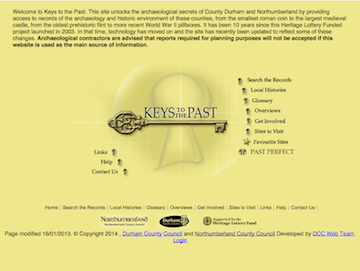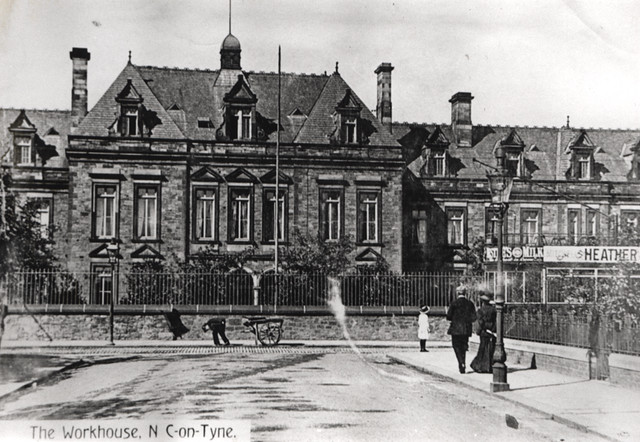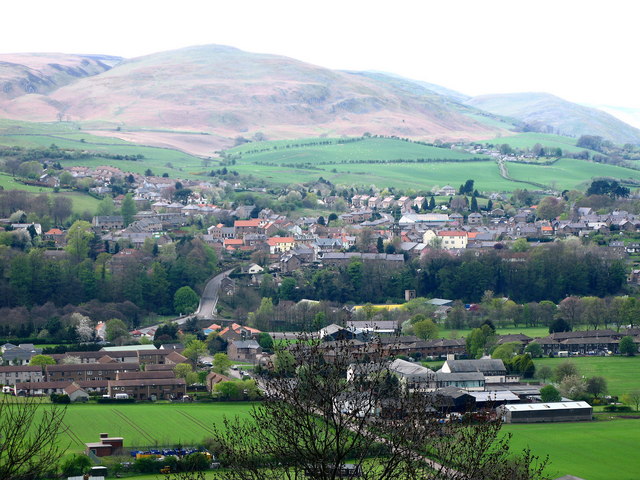Topics > Industry and Work > Workhouses > Poor Law Unions > Glendale Poor Law Union
Glendale Poor Law Union
Poor Law Unions were set-up across the country, following the 1834 Poor Law Amendment Act (the 'New Poor Law'). Glendale Poor Law Union in Northumberland was formally created on the 18th November 1836, and was overseen by an elected Board of Guardians, representing its 45 constituent parishes and townships. Prior to that an earlier workhouse in Wooler had been established in 1760. The new Glendale Union Workhouse was built in 1839 to the south of the High Street in Wooler.
THE GLENDALE POOR LAW UNION comprehends forty-five parishes and townships, embracing an area of 142,305 acres, and a population in 1851, 14,348 souls. The townships and parishes are Akeld, Brandon, Branton, Branxton, Bewick New, Bewick Old, Carham, Chatton, Chillingharn, Coldsmouth and Thornpson's Walls, Coupland, Crookhouse, Doddington, Earle, Ewart, Fawdon Clinch and Hartside, Ford, Grey's Forest, Heathpool, Hebburn, Howtell, Humbleton, Ilderton, Ingram, Linhop and Greenshawhill, Kilham, Kirk Newton, Lanton, Lilburn East, Lilburn West, Lowick, Middleton Hall, Middleton North, Middleton South, Milfield, Nesbit, Newton West, Newtown, Paston, Reaveley, Roddam, Rosedon, Selby's Forest, Wooler, Wooperton, and Yeavering.
THE UNION WORKHOUSE occupies a healthy situation at the west end or the town. It is a fine commodious building, erected in 1839, and will accommodate about seventy persons : there are at present fifty inmates. There is a school attached for the education of the pauper children. Governor and schoolmaster, Mr. George Paxton ; matron, Margery Allan ; surgeon, James Alexander ; clerk, William Wightman ; relieving officer and registrar, Thomas Carr.
Extract from: History, Topography, and Directory of Northumberland...Whellan, William, & Co, 1855.
Glendale Union Workhouse was a two storey building, designed to a cruciform plan, which created four small yards for the different classes of inmates (resembling Sampson Kempthorne's '200-pauper' plan, published by the Poor Law Commission in 1835). The building was later used as the headquarters of Glendale Rural District Council between 1894 and 1954. It was later used as an archaeology centre and then a Field Study Centre. Following refurbishment, the former workhouse is now a community hub, known as The Cheviot Centre, which is run by the Glendale Gateway Trust.

from https://www.berwickfriends.or…
Glendale Board of Guardians minute book - 1883 - 1887
- PDF: "Glendale Board of Guardians minute
book outlining the business of the
Guardians in administering Poor
Relief in the Glendale Union, 23 August 1883
to 7 July 1887."
Added by
Simon Cotterill

from https://www.workhouses.org.uk…
The Workhouse in Glendale
- "Before 1834 - On July 12th 1760, the Newcastle Courant reported that, thanks to a donation of 150 guineas by the Earl of Tankerville, the 'Wooler licenced work-house for the …
Added by
Simon Cotterill

from https://keystothepast.info/se…
Glendale Poor Union Workhouse
- Built in 1839 in the area now known as Padgepool Place. The ground plan is cross-shaped and incorporated a hospital and school. Later used as council buildings and field study …
Added by
Simon Cotterill


from https://www.berwickfriends.or…
Glendale Board of Guardians minute book - 1883 - 1887
- PDF: "Glendale Board of Guardians minute
book outlining the business of the
Guardians in administering Poor
Relief in the Glendale Union, 23 August 1883
to 7 July 1887."
Added by
Simon Cotterill

from https://www.workhouses.org.uk…
The Workhouse in Glendale
- "Before 1834 - On July 12th 1760, the Newcastle Courant reported that, thanks to a donation of 150 guineas by the Earl of Tankerville, the 'Wooler licenced work-house for the …
Added by
Simon Cotterill

from https://keystothepast.info/se…
Glendale Poor Union Workhouse
- Built in 1839 in the area now known as Padgepool Place. The ground plan is cross-shaped and incorporated a hospital and school. Later used as council buildings and field study …
Added by
Simon Cotterill













